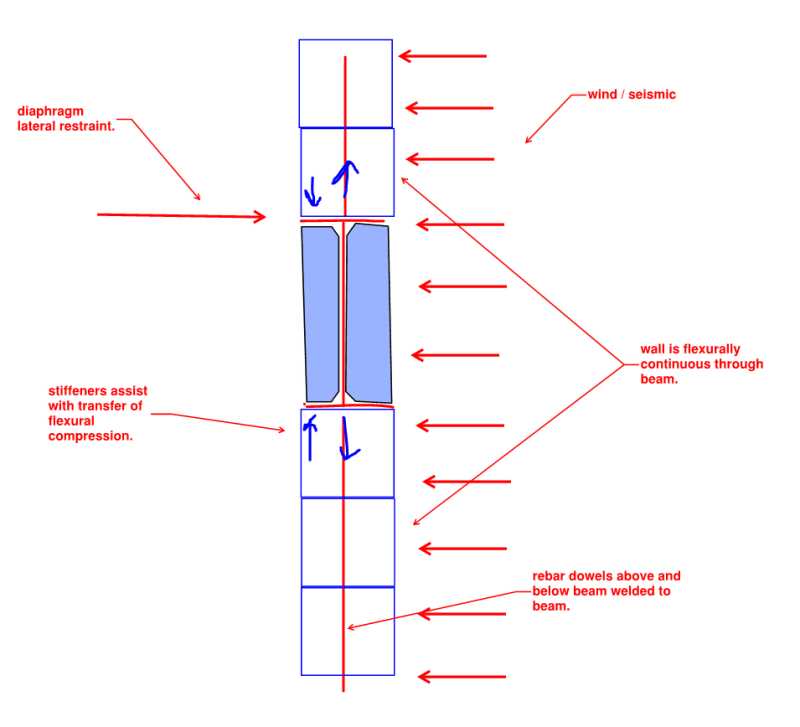planc
Structural
- Mar 3, 2022
- 64

can putting such stiffener plates inside the web and flange (illustrated above) produce restrain against torsion? What is the formula for the spacing of the plates?
Follow along with the video below to see how to install our site as a web app on your home screen.
Note: This feature may not be available in some browsers.
Planc said:LIke what for example? The ends of the parapet will be connected to steel extended from column.
planc said:So given the w8x21 is very small, and has poor torsion, how do you strengthen its torsion if not for plates or trusses. You are saying the plates are only viable solution?

phanENG said:KootK - rough day at the office?
KootK said:I suspect that that planc is still that guy and that this is actually still that building.
Now that we fully understand your situation, I think that the solution is quite simple. Per the sketch below, you can make the wall flexurally continuous across the beam such that the beam has no meaningful torsional requirement (granted the rebar welds are atrocious). With this solution, the stiffeners would indeed perform a useful function. This may well have been what your local engineer meant in the first place when they told you that there wasn't really a torsion issue to be concerned about.

@OP: I feel that the trussing idea needs to be abandoned given the size of your beam. It's just not viable for something as small as a W8x21. I was imagining something much larger when I proposed my trussing scheme.



